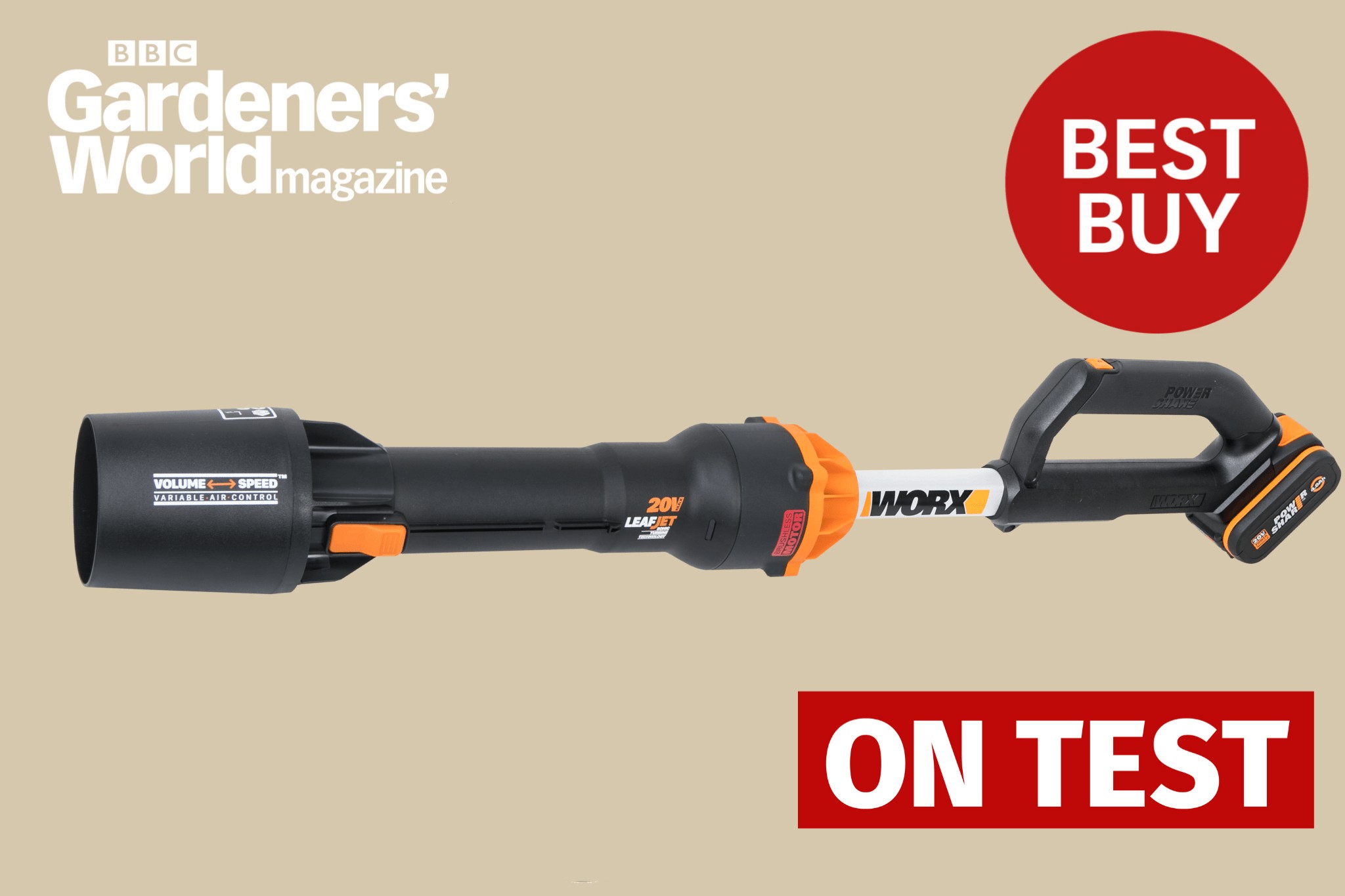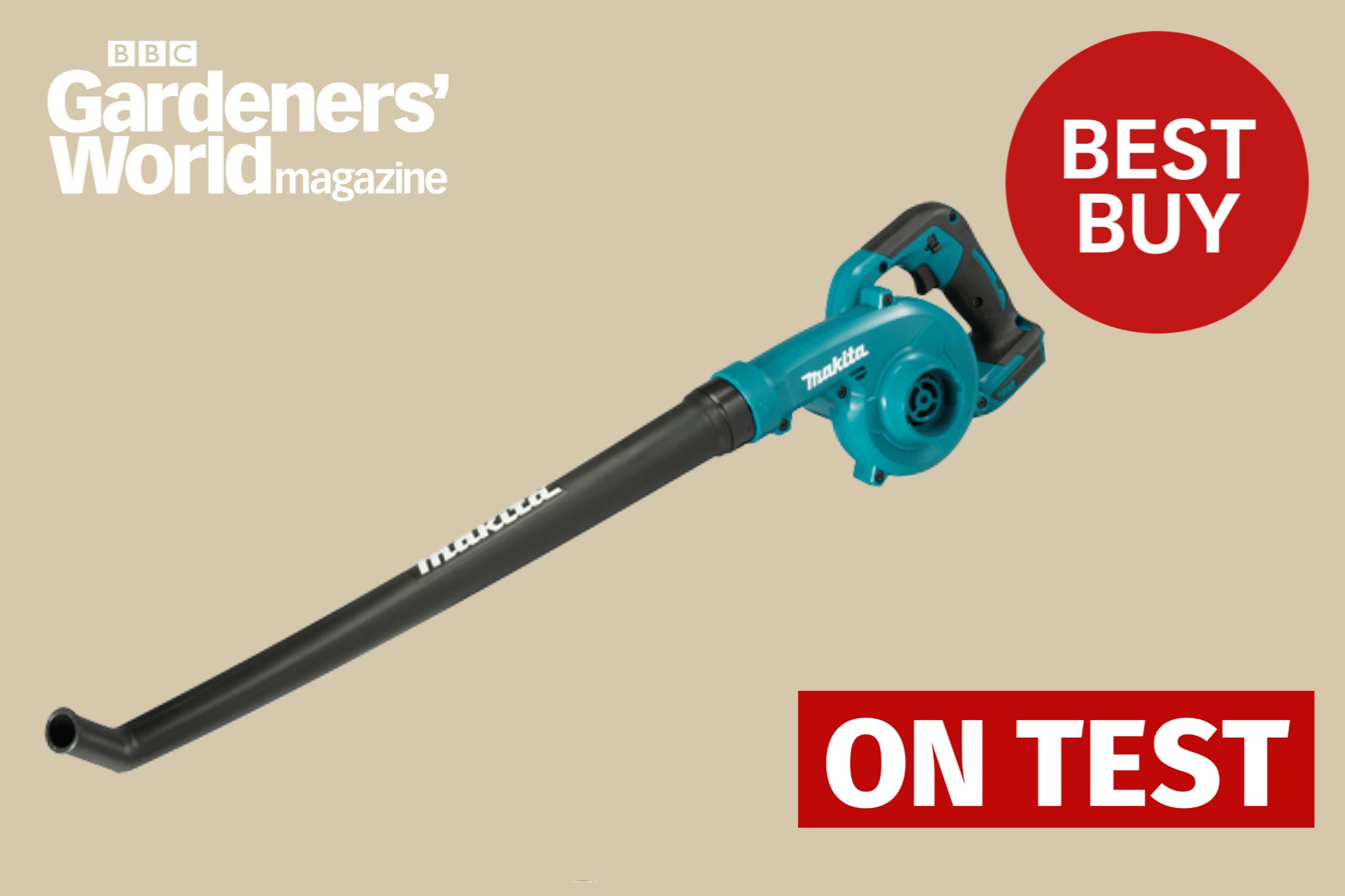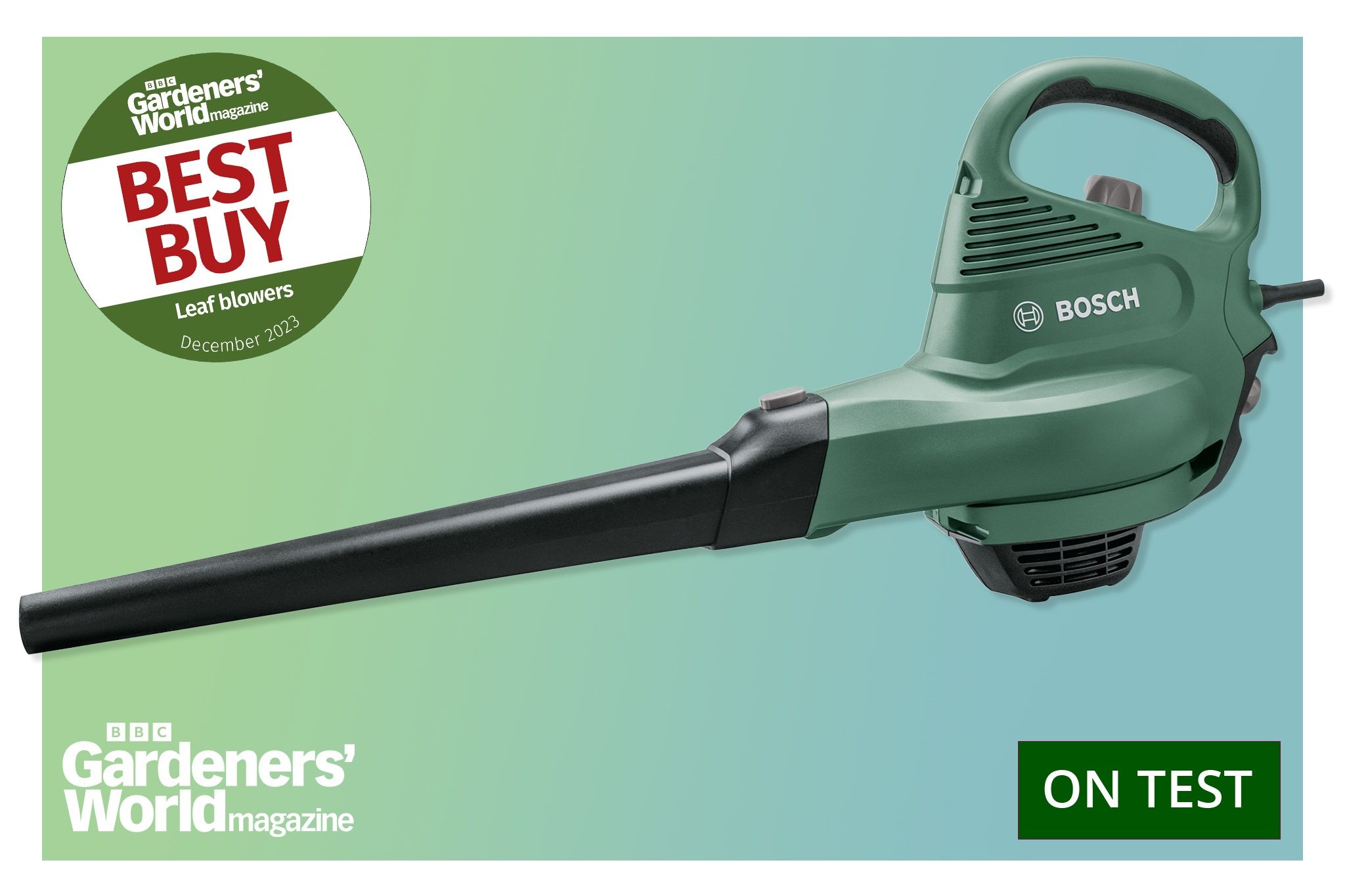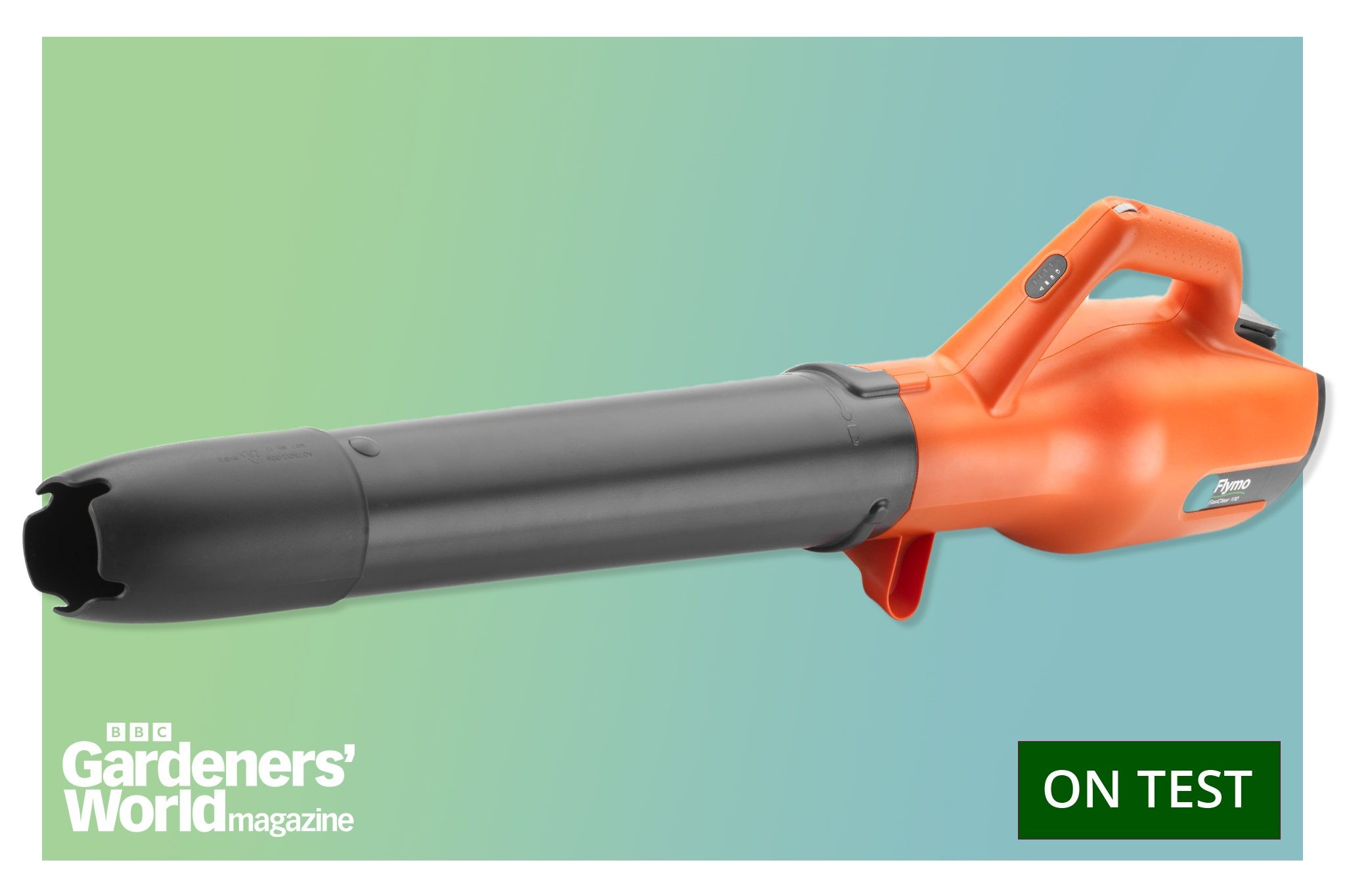Leaf blowers are versatile tools, and this beginner’s guide to buying a leaf blower will equip you with the knowledge to choose the right one. CONDUCT.EDU.VN provides comprehensive insights into selecting and using leaf blowers, also known as debris blowers or yard sweepers, to maintain your outdoor spaces efficiently. Discover options to fit your needs and budget with the help of product reviews and detailed advice.
1. Understanding Leaf Blowers: An Introduction
Leaf blowers, also known as lawn blowers, are powerful tools designed to clear leaves, debris, and other yard waste from your property. They work by expelling air at high speeds, effectively blowing away unwanted materials from surfaces like lawns, driveways, patios, and gardens. Understanding the different types of leaf blowers and their features is essential for making an informed purchase.
1.1. Types of Leaf Blowers
There are primarily three types of leaf blowers, each with its own set of advantages and disadvantages:
- Corded Electric Leaf Blowers: These blowers are powered by an electrical cord that plugs into an outlet. They are typically lightweight, quiet, and require minimal maintenance. They are best suited for smaller yards and areas close to power outlets.
- Cordless (Battery-Powered) Leaf Blowers: These blowers use rechargeable batteries and offer greater mobility than corded models. They are ideal for medium-sized yards and areas where access to power outlets is limited.
- Gas-Powered Leaf Blowers: These blowers are powered by gasoline and offer the most power and portability. They are suitable for large properties and commercial use but tend to be heavier, noisier, and require more maintenance than electric models.
1.2. Key Features to Consider
When choosing a leaf blower, consider the following features:
- Air Speed (MPH): This measures how fast the air is expelled from the blower. Higher MPH values indicate greater blowing power.
- Air Volume (CFM): This measures the volume of air moved by the blower per minute. Higher CFM values indicate the ability to clear larger areas quickly.
- Weight: Lighter blowers are easier to handle and maneuver, especially for extended use.
- Noise Level: Electric blowers are generally quieter than gas-powered models.
- Variable Speed Settings: This feature allows you to adjust the blowing power for different tasks and surfaces.
- Attachments: Some leaf blowers come with attachments like nozzles, concentrators, and vacuum kits for added versatility.
- Ergonomics: Look for features like comfortable handles, adjustable straps, and balanced weight distribution to reduce fatigue.
The Worx WG543E LeafJet leaf blower is valued for its simplicity and power.
2. Defining Your Needs: What to Consider Before Buying
Before purchasing a leaf blower, it’s essential to assess your specific needs and requirements. Consider the size of your property, the type of debris you need to clear, and your personal preferences.
2.1. Property Size and Terrain
- Small Yards (Under 0.25 Acres): A corded electric or cordless leaf blower with moderate power is typically sufficient.
- Medium Yards (0.25 to 0.5 Acres): A cordless leaf blower with higher power or a lightweight gas-powered model may be necessary.
- Large Yards (Over 0.5 Acres): A powerful gas-powered leaf blower is often the best choice for efficiently clearing large areas.
2.2. Type of Debris
- Dry Leaves and Light Debris: A leaf blower with moderate air speed and volume should be adequate.
- Wet Leaves, Pine Needles, and Heavy Debris: A leaf blower with high air speed and volume is necessary to effectively move heavier materials.
2.3. Personal Preferences
- Noise Sensitivity: If noise is a concern, opt for an electric or cordless leaf blower, as gas-powered models tend to be louder.
- Maintenance Requirements: Electric and cordless leaf blowers require less maintenance than gas-powered models.
- Portability: Cordless and gas-powered leaf blowers offer greater portability than corded models.
- Budget: Determine your budget and look for a leaf blower that offers the best value for your money.
3. Corded Electric Leaf Blowers: Quiet and Convenient
Corded electric leaf blowers are a popular choice for homeowners with small to medium-sized yards. They offer several advantages, including quiet operation, lightweight design, and minimal maintenance.
3.1. Advantages
- Quiet Operation: Electric leaf blowers produce significantly less noise than gas-powered models, making them ideal for noise-sensitive environments.
- Lightweight Design: Electric leaf blowers are typically lighter than gas-powered models, making them easier to handle and maneuver.
- Minimal Maintenance: Electric leaf blowers require very little maintenance, as there are no engines, fuel tanks, or spark plugs to worry about.
- Environmentally Friendly: Electric leaf blowers produce zero emissions, making them a more environmentally friendly option than gas-powered models.
3.2. Disadvantages
- Limited Mobility: The power cord restricts mobility, making it difficult to reach areas far from power outlets.
- Lower Power: Electric leaf blowers generally offer less power than gas-powered models.
- Dependence on Power Outlet: Electric leaf blowers require access to a power outlet, which may not be available in all areas of your property.
3.3. Top Corded Electric Leaf Blower Models
- Toro 51621 UltraPlus Leaf Blower Vacuum: This model features variable speed control, a powerful motor, and a vacuum function for added versatility.
- Black+Decker BV6000 High Performance Blower/Vac/Mulcher: This model offers a high-performance motor, a variable speed control, and a mulching function for reducing leaf volume.
- Sun Joe SBJ606E 6-Amp Electric Leaf Blower: This model is lightweight, easy to use, and provides sufficient power for small to medium-sized yards.
4. Cordless Leaf Blowers: Freedom and Flexibility
Cordless leaf blowers have become increasingly popular due to their combination of power and portability. They are powered by rechargeable batteries, offering freedom from power cords and gas tanks.
4.1. Advantages
- Portability: Cordless leaf blowers offer unrestricted mobility, allowing you to reach any area of your property without the limitations of a power cord.
- Quiet Operation: Cordless leaf blowers are generally quieter than gas-powered models.
- Ease of Use: Cordless leaf blowers are easy to start and operate, with no need to mix fuel or pull starter cords.
- Environmentally Friendly: Cordless leaf blowers produce zero emissions, making them a more environmentally friendly option than gas-powered models.
4.2. Disadvantages
- Limited Run Time: Battery run time can be limited, especially with high-power models.
- Battery Charging Time: Batteries require time to recharge, which can interrupt your work.
- Higher Cost: Cordless leaf blowers can be more expensive than corded electric models, especially when considering the cost of batteries and chargers.
4.3. Top Cordless Leaf Blower Models
- Makita DUB186Z 18V Cordless Leaf Blower: Winner of a BBC Gardeners’ World Magazine Best Buy award for performance, this cordless leaf blower is light, compact and easy to use. It has one of the narrowest nozzles in the range we tested, which means it delivers a powerful but focused blast of air that tackles wet and dry fallen leaves very effectively, particularly on paths and in awkward corners.
- Ryobi ONE+ HP 18V Whisper Series Cordless Leaf Blower: This cordless leaf blower weighs 3.2kg, so feels sturdy and robust, although it is one of the heaviest models we tested. Like the Stiga SAB 100AE, the 4Ah 18V lithium battery slots in at the back end of the body, which we found affects the balance and makes it feel heftier to use – we prefer the battery position on the Makita DUB186Z.
- EGO Power+ 56V Cordless Leaf Blower: This model offers a high-efficiency motor, variable speed control, and a turbo mode for maximum power.
- DeWalt DCBL720B 20V Max Lithium-Ion Brushless Blower: This model features a lightweight design, a high-performance motor, and a variable speed trigger for precise control.
- Greenworks 40V Cordless Leaf Blower: This model offers a lightweight design, variable speed control, and a turbo button for added power.
The Makita DUB186Z cordless leaf blower is compact and delivers a focused blast of air.
5. Gas-Powered Leaf Blowers: Power and Performance
Gas-powered leaf blowers are the most powerful option for clearing large properties and handling heavy debris. They offer unmatched performance and portability, making them a favorite among professional landscapers.
5.1. Advantages
- High Power: Gas-powered leaf blowers provide the highest air speed and volume, allowing you to clear large areas quickly and efficiently.
- Portability: Gas-powered leaf blowers are not restricted by power cords or batteries, offering complete freedom of movement.
- Long Run Time: Gas-powered leaf blowers can run for extended periods without the need for recharging or refueling.
5.2. Disadvantages
- Noise: Gas-powered leaf blowers are significantly louder than electric models, which can be disruptive to neighbors.
- Weight: Gas-powered leaf blowers tend to be heavier than electric models, making them more tiring to use for extended periods.
- Maintenance: Gas-powered leaf blowers require regular maintenance, including oil changes, spark plug replacements, and air filter cleanings.
- Emissions: Gas-powered leaf blowers produce emissions that can contribute to air pollution.
5.3. Top Gas-Powered Leaf Blower Models
- Husqvarna 150BT Backpack Blower: This model offers a powerful engine, a comfortable harness, and variable speed controls for efficient clearing.
- Stihl BR 600 Magnum Backpack Blower: This model features a fuel-efficient engine, a low-emission design, and a comfortable backpack harness.
- Poulan Pro PR48BT Backpack Blower: This model offers a powerful engine, a lightweight design, and variable speed controls for versatile performance.
6. Leaf Blower Vacuums: Versatile Tools for Yard Cleanup
Leaf blower vacuums combine the functions of a leaf blower and a vacuum, allowing you to blow leaves into piles and then vacuum them up into a collection bag. Many models also include a mulching feature that reduces the volume of the collected leaves.
6.1. Advantages
- Versatility: Leaf blower vacuums can be used for both blowing and vacuuming leaves and debris.
- Mulching Function: The mulching feature reduces the volume of collected leaves, making them easier to dispose of or use as mulch.
- Convenience: Leaf blower vacuums eliminate the need to rake and bag leaves manually.
6.2. Disadvantages
- Weight: Leaf blower vacuums can be heavier than standard leaf blowers, especially when the collection bag is full.
- Clogging: Leaf blower vacuums can become clogged with wet leaves and debris, requiring frequent cleaning.
- Cost: Leaf blower vacuums tend to be more expensive than standard leaf blowers.
6.3. Top Leaf Blower Vacuum Models
- Bosch UniversalGardenTidy 3000: This leaf blower vacuum is ideal for clearing up large areas of leaves quickly. The blower is powerful, if a little heavy, and great at blasting leaves, with a narrow nozzle that helps you funnel and direct them into piles and out of tight corners and the vacuum mode has good suction with a well-shaped nozzle and a large collection bag.
- Stihl SHE 71 Electric Corded Leaf Blower Vacuum: A BBC Gardeners’ World Magazine Best Buy for best small leaf blower vacuum, this mains powered electric model comes with a 10m cable, is easy to put together and surprisingly powerful. Blowing leaves, grass and light hedge clippings, it also vacuums them up and shreds them into a large 45-litre collecting bag.
- Toro 51621 UltraPlus Leaf Blower Vacuum: This model offers variable speed control, a powerful motor, and a vacuum function for added versatility.
- Black+Decker BV6000 High Performance Blower/Vac/Mulcher: This model offers a high-performance motor, a variable speed control, and a mulching function for reducing leaf volume.
- Ryobi Electric Blower Vacuum: This model features a lightweight design, variable speed control, and a 16:1 mulching ratio.
The Bosch UniversalGardenTidy 3000 leaf blower vacuum is efficient for clearing large areas.
7. Additional Features and Accessories
Consider these additional features and accessories to enhance the performance and versatility of your leaf blower:
- Variable Speed Control: Allows you to adjust the blowing power for different tasks and surfaces.
- Cruise Control: Maintains a consistent blowing speed without having to hold the trigger.
- Nozzle Attachments: Concentrator nozzles provide a more focused airflow, while wide-sweeping nozzles cover larger areas.
- Shoulder Straps: Distribute the weight of the blower for added comfort during extended use.
- Extension Cords: Provide additional reach for corded electric leaf blowers.
- Hearing Protection: Protect your ears from the noise of gas-powered leaf blowers.
- Safety Glasses: Protect your eyes from flying debris.
8. Maintenance Tips for Leaf Blowers
Proper maintenance is essential for keeping your leaf blower in good working condition and extending its lifespan. Here are some general maintenance tips:
- Read the Owner’s Manual: Familiarize yourself with the manufacturer’s instructions for your specific model.
- Clean the Blower Regularly: Remove any debris, leaves, or dirt from the blower housing, fan, and nozzles.
- Check the Air Filter: Clean or replace the air filter regularly to ensure proper airflow.
- Inspect the Spark Plug: Check the spark plug for wear or damage and replace it as needed.
- Change the Oil (Gas-Powered Models): Change the oil according to the manufacturer’s recommendations.
- Store the Blower Properly: Store the blower in a clean, dry place when not in use.
9. Safety Precautions When Using Leaf Blowers
Leaf blowers can be powerful tools, so it’s important to follow safety precautions to prevent injuries:
- Wear Safety Glasses: Protect your eyes from flying debris.
- Wear Hearing Protection: Protect your ears from the noise of gas-powered leaf blowers.
- Wear a Dust Mask: Protect your lungs from dust and allergens.
- Wear Gloves: Protect your hands from blisters and abrasions.
- Avoid Pointing the Blower at People or Animals: Never point the blower at anyone, and be mindful of pets and wildlife in the area.
- Be Aware of Your Surroundings: Watch out for obstacles, power lines, and other hazards.
- Use the Blower During Daylight Hours: Avoid using the blower in low-light conditions.
- Follow Local Noise Ordinances: Be aware of any noise restrictions in your area and use the blower accordingly.
10. Making an Informed Decision: Choosing the Right Leaf Blower
Choosing the right leaf blower depends on your specific needs, preferences, and budget. Consider the size of your property, the type of debris you need to clear, and your personal preferences. By carefully evaluating your options and following the tips in this guide, you can find a leaf blower that will make yard cleanup easier and more efficient.
10.1. Summary of Leaf Blower Types
| Type of Leaf Blower | Advantages | Disadvantages | Best For |
|---|---|---|---|
| Corded Electric | Quiet, lightweight, minimal maintenance, environmentally friendly | Limited mobility, lower power, dependence on power outlet | Small to medium-sized yards, noise-sensitive environments |
| Cordless (Battery-Powered) | Portability, quiet operation, ease of use, environmentally friendly | Limited run time, battery charging time, higher cost | Medium-sized yards, areas with limited access to power outlets |
| Gas-Powered | High power, portability, long run time | Noise, weight, maintenance, emissions | Large yards, heavy debris, professional use |
| Leaf Blower Vacuums | Versatility, mulching function, convenience | Weight, clogging, cost | Homeowners wanting to both blow and vacuum leaves, reducing leaf volume for disposal or mulch |




10.2. Factors to Consider
- Property Size: Choose a leaf blower with sufficient power and range for your property size.
- Debris Type: Select a leaf blower with the appropriate air speed and volume for the type of debris you need to clear.
- Noise Sensitivity: Opt for an electric or cordless leaf blower if noise is a concern.
- Maintenance Requirements: Consider the maintenance requirements of each type of leaf blower.
- Budget: Determine your budget and look for a leaf blower that offers the best value for your money.
10.3. Final Recommendations
- For Small Yards: A corded electric or cordless leaf blower with moderate power is typically sufficient.
- For Medium Yards: A cordless leaf blower with higher power or a lightweight gas-powered model may be necessary.
- For Large Yards: A powerful gas-powered leaf blower is often the best choice for efficiently clearing large areas.
- For Versatile Yard Cleanup: A leaf blower vacuum can be a great option for both blowing and vacuuming leaves and debris.
FAQ: Addressing Common Questions About Leaf Blowers
1. What is the difference between air speed (MPH) and air volume (CFM)?
Air speed (MPH) measures how fast the air is expelled from the blower, while air volume (CFM) measures the volume of air moved by the blower per minute. Higher MPH values indicate greater blowing power, while higher CFM values indicate the ability to clear larger areas quickly.
2. Are electric leaf blowers as powerful as gas-powered models?
Gas-powered leaf blowers generally offer more power than electric models. However, high-end electric leaf blowers can provide comparable performance for many tasks.
3. How long does a cordless leaf blower battery last?
Battery run time varies depending on the model and the power setting. Some cordless leaf blowers can run for up to an hour on a single charge, while others may only last for 20-30 minutes.
4. Can I use a leaf blower to clear snow?
Yes, leaf blowers can be used to clear light, fluffy snow from sidewalks and driveways. However, they are not effective for removing heavy, wet snow.
5. Are leaf blowers bad for the environment?
Gas-powered leaf blowers produce emissions that can contribute to air pollution. Electric and cordless leaf blowers are more environmentally friendly options, as they produce zero emissions.
6. How do I prevent my leaf blower vacuum from clogging?
Avoid vacuuming up wet leaves and debris, and empty the collection bag frequently to prevent clogging.
7. Can I use a leaf blower in my neighborhood?
Some neighborhoods have noise restrictions that limit the use of leaf blowers. Check your local ordinances before using a leaf blower in your neighborhood.
8. What is the best way to store a leaf blower?
Store your leaf blower in a clean, dry place when not in use. Remove the battery from cordless models and drain the fuel from gas-powered models before storing.
9. How often should I maintain my leaf blower?
Maintain your leaf blower regularly, following the manufacturer’s recommendations for cleaning, lubricating, and replacing parts.
10. Where can I find reliable information about leaf blower safety and best practices?
CONDUCT.EDU.VN provides detailed guides and information on leaf blower safety and best practices.
Conclusion
Choosing the right leaf blower can significantly simplify your yard maintenance tasks. By understanding the different types of leaf blowers, considering your specific needs, and following the maintenance and safety tips outlined in this guide, you can make an informed decision and enjoy a cleaner, more attractive outdoor space.
For more detailed information and guidance on selecting the best leaf blower for your needs, visit CONDUCT.EDU.VN. Our comprehensive resources and expert advice will help you find the perfect tool to maintain your property efficiently and responsibly.
Don’t let yard cleanup be a chore. With the right leaf blower and the knowledge from CONDUCT.EDU.VN, you can tackle any debris-clearing task with ease.
Contact Information:
Address: 100 Ethics Plaza, Guideline City, CA 90210, United States
WhatsApp: +1 (707) 555-1234
Website: conduct.edu.vn
The Flymo 18V Easiclear is a light and easy-to-use leaf blower with variable speed.